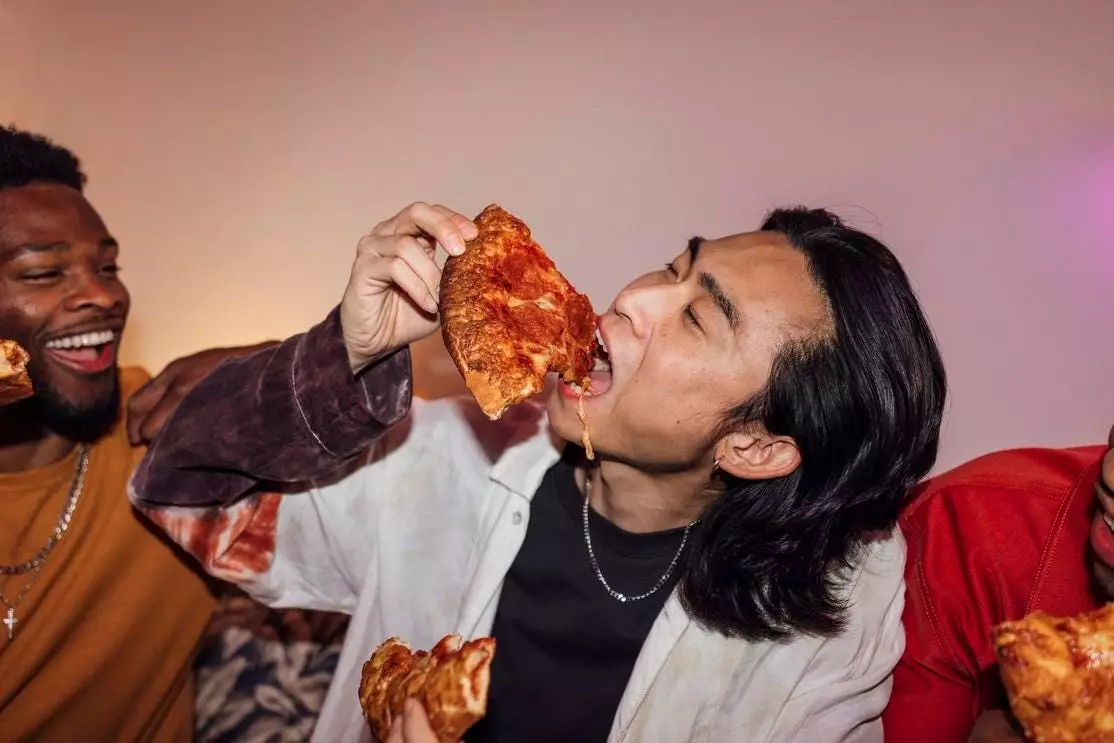The phenomenon colloquially known as “the munchies” transcends mere comedy and casual conversation within cannabis culture; it is rooted in complex biological mechanisms that affect our cognitive functions and appetites. For those unaware, the munchies refer to the intense cravings for high-calorie snacks that often occur after consuming cannabis. Scientific studies have demonstrated that this effect isn’t just anecdotal but is supported by biological and neurological research.
Research published in esteemed scientific journals, such as Nature Neuroscience, reveals that cannabis compounds activate the body’s endocannabinoid system, which heightens senses like taste and smell. This sensory enhancement overrides the natural feeling of fullness we usually experience, augmenting our appetite in a distinct way. The active compound THC stimulates the release of ghrelin, a hunger hormone, driving you to seek out food in even more compelling ways than usual. It’s not merely about satisfying hunger; it’s about a richer, more vivid sensory experience that makes eating all the more pleasurable.
The Dopaminergic Dance: Reward-Based Eating
An essential aspect of the munchies lies not only in heightened hunger but also in the activation of the brain’s reward pathways. Research from the Journal of Psychopharmacology emphasizes that cannabis consumption boosts dopamine activity in the striatum, the nucleus responsible for reward-seeking behavior. This interaction creates a compelling feedback loop where eating becomes an act of both necessity and intense gratification, seamlessly blending physical sensation with psychological reward.
But here’s where it gets interesting: not everyone experiences the munchies equally. Long-term cannabis users may find their reward system altered, resulting in different levels of appetite stimulation. What accounts for this variance? It could include tolerance build-up, individual neurological differences, and environmental factors that modify how cravings manifest. This means that while some individuals may find themselves ensnared in a swirling vortex of cravings, others may walk away relatively unaffected.
Cultural Influences and the Modern Fast Food Landscape
As society navigates the implications of cannabis consumption, cultural factors play a pivotal role in shaping what choices we make when cravings strike. In the contemporary age of rapid food service and convenient food apps, Americans are seeing a continuous rise in fast-food consumption. According to a study by Tastewise, a whopping 75% of Americans now indulge in fast food at least once a week, with convenience, comfort, and cravings ranked as the top reasons for these purchases. This cultural landscape inherently aligns with what we classify as munchies meals: salty, satisfying, and readily available.
The rise of cannabis-focused food holidays, such as 4/20, signifies more than just a celebration; it has morphed into a culinary marketplace where brands actively compete to satisfy cravings. San Francisco’s guilt-free indulgences or New York’s artisan pizza shops now find themselves immersed in dialogues about cannabis culture. The atmosphere isn’t just one of sheer consumption; rather, it’s a burgeoning acceptance of cannabis that blurs the lines between health and vice.
The Shift in Perception: From Stigmatization to Normalization
In recent years, public attitudes towards cannabis have undergone a radical transformation. Former stigmas are deconstructing as cannabis becomes part of normal behavioral health metrics, akin to analyzing food consumption and physical activity levels. Most countries are even reporting cannabis use data alongside more traditional health metrics, fostering a view that emphasizes manageable behaviors rather than moral judgments about substance use. With this shift comes a wave of fast-food brands eager to capitalize on the new cannabis consumer: those who seek comfort and indulgence in a landscape that increasingly normalizes cannabis use.
Cannabis consumers are no longer marginalized; they represent an evolving mainstream demographic. With a doubling of marijuana users since 2013, brands in the fast-food sector, like Taco Bell and Jack in the Box, are tailoring promotional strategies to cater to this robust market. However, they do so discreetly, often omitting explicit references to cannabis while enhancing menu offerings with extravagant sauces, towering burgers, and quirky options exclusively available during late-night hours.
Beyond Cravings: Exploring Health Implications and Meal Structures
Interestingly, the intersection of cannabis use, appetite, and health is nuanced. While cannabis may amplify cravings, emerging studies hint that it does not correlate with obesity and may even be linked to lower risks of diabetes. This complexity disrupts long-held narratives about cannabis’s impact on health, suggesting that munchies could imply not merely more food consumption but a shift in our eating behaviors toward more satisfying and meaningful meals.
In this modern age, as cannabis continues to find its place within the social fabric, it invites us to rethink not just what we consume when we have the munchies, but how those choices reflect larger trends in health, culture, and well-being. Thus, the relationship between cannabis and food is not merely about indulgence; it also opens avenues for discussions about mindful eating, emotional context, and the way we derive satisfaction from what we consume.


Leave a Reply